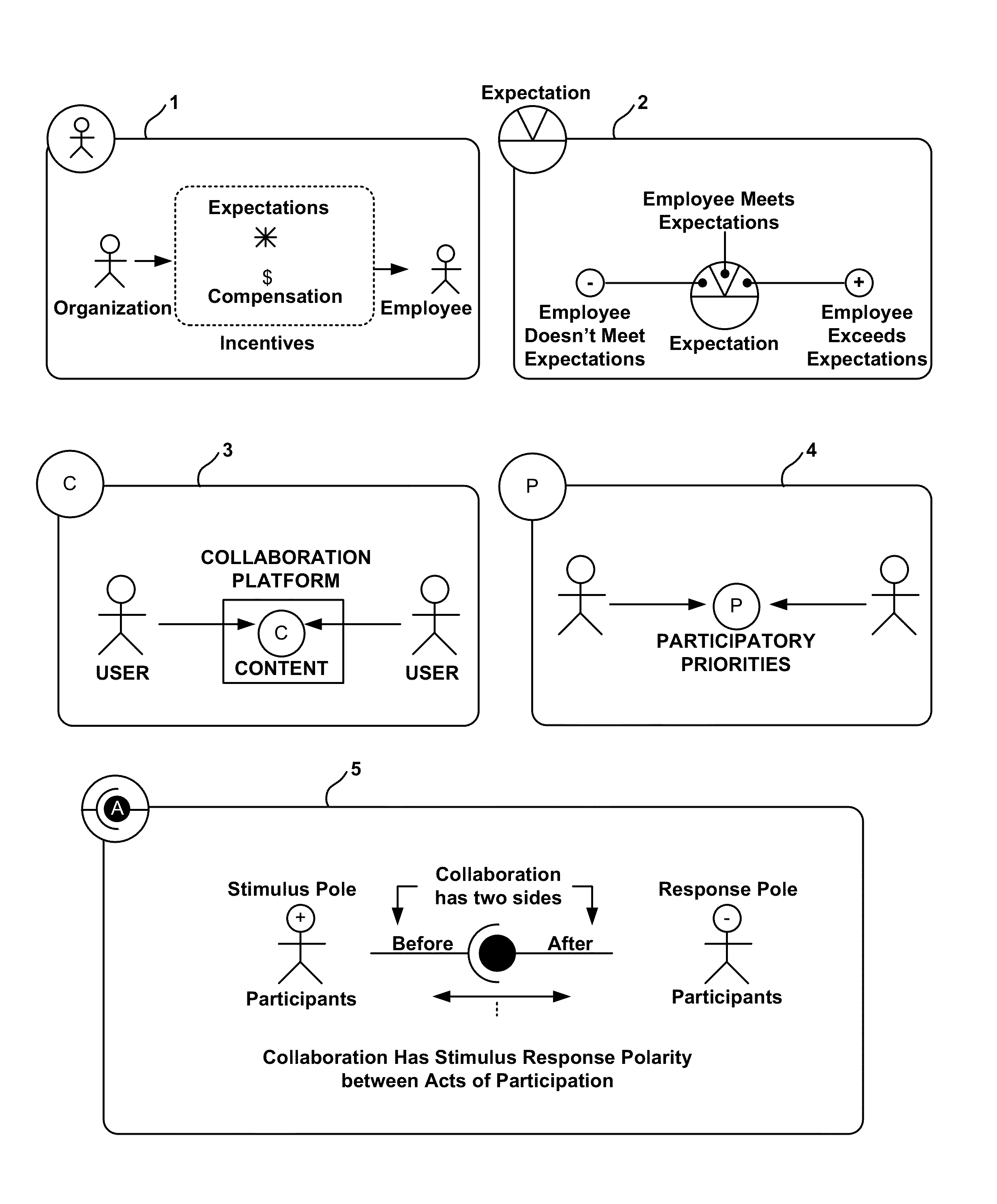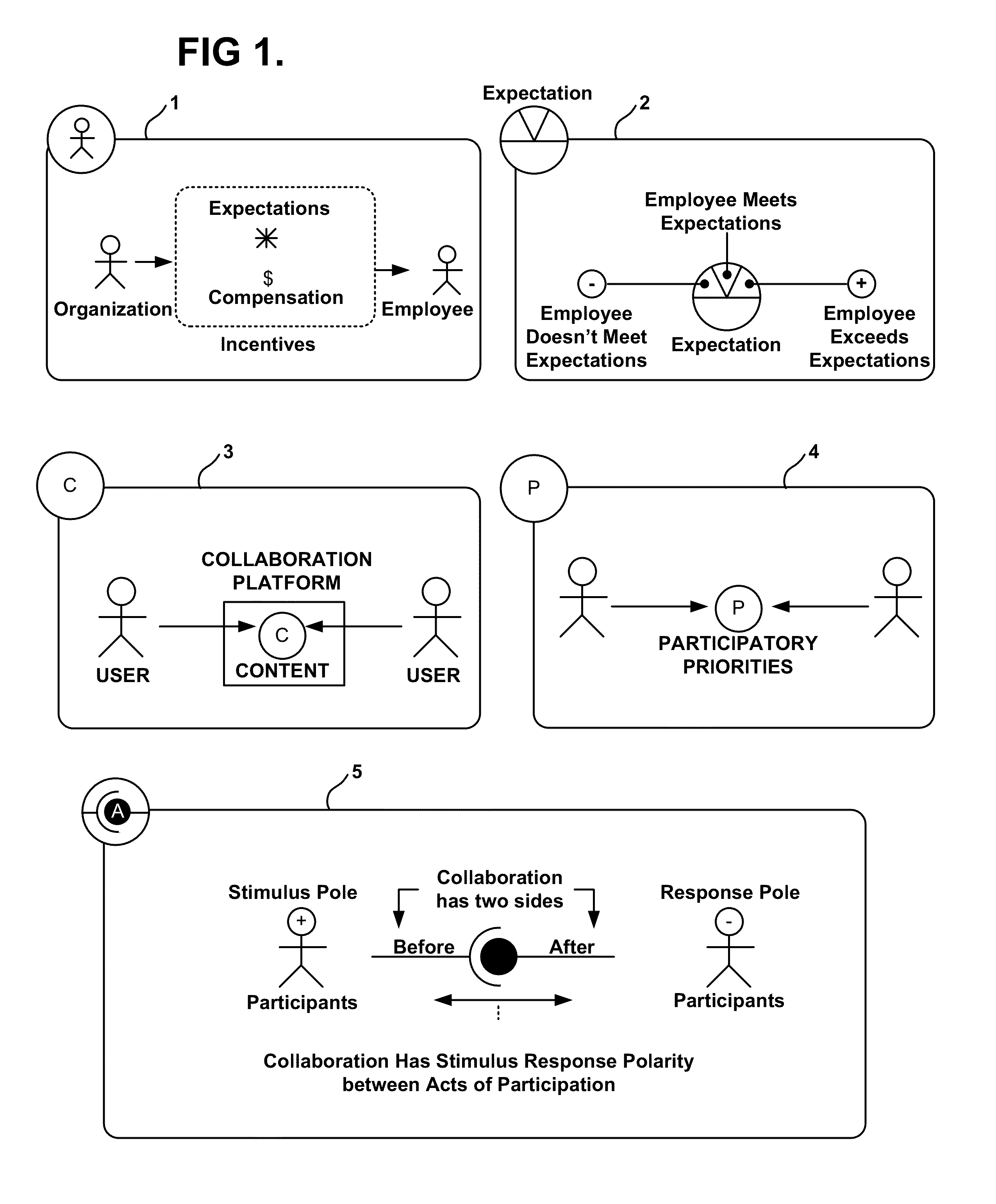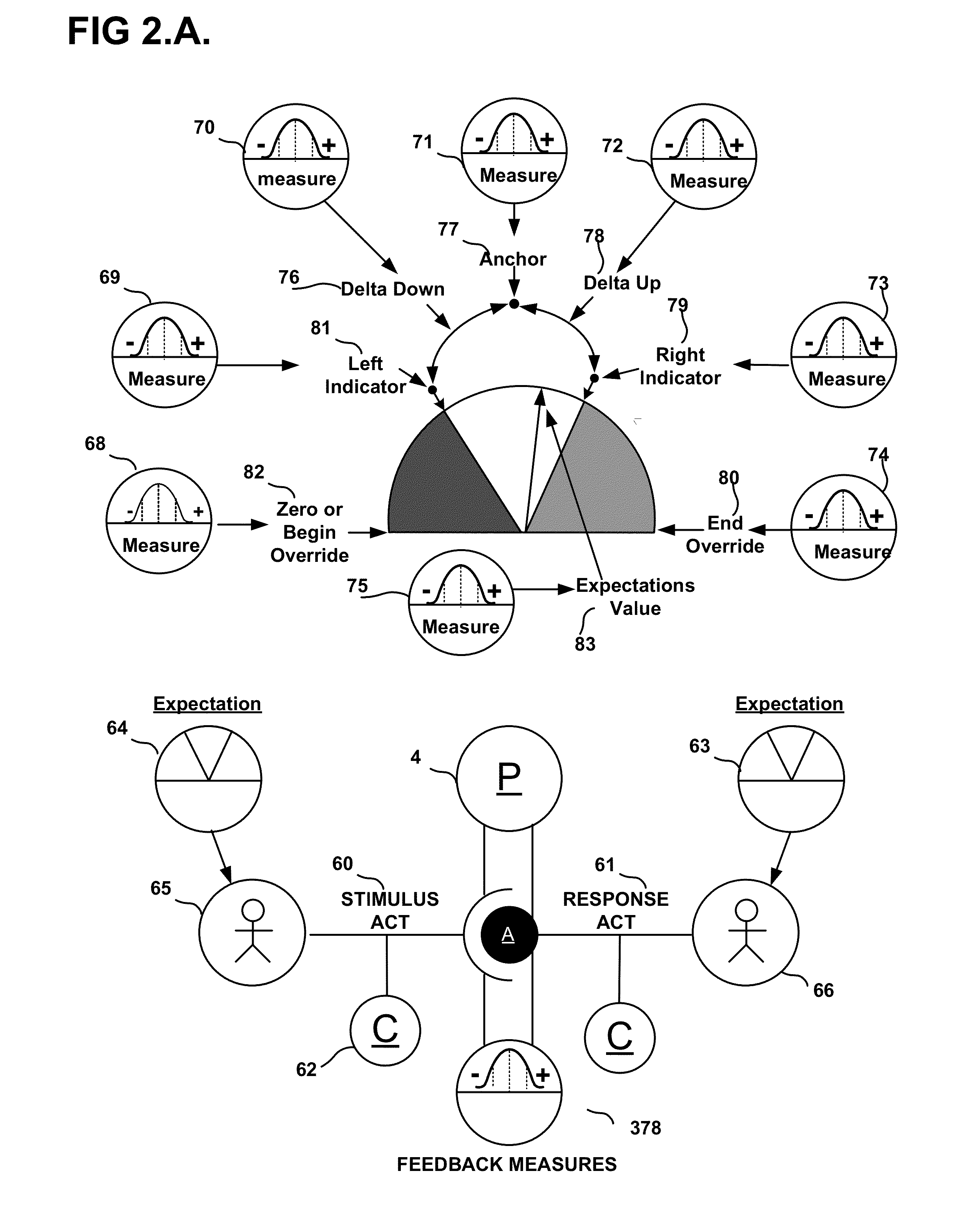Collaboration Catalyst Machine
a technology of collaboration and catalyst machine, applied in the field of social business software, can solve the problems of loss of profitability, complex streams of engaged collaboration between large volumes of people, and the restructuring of corporate workforce, and achieve the effects of increasing the number of employees, increasing the number of people, and constant measurement of the quality of collaboration
- Summary
- Abstract
- Description
- Claims
- Application Information
AI Technical Summary
Benefits of technology
Problems solved by technology
Method used
Image
Examples
Embodiment Construction
[0058]As mentioned previously the invention combines 6 concepts together to unleash the overall and total novelty of the invention. However the claims of the invention build from fewer concepts; this invention has been built from a series of novel components that are then combined to achieve the overall value proposition. It is possible to extract significant novel value from subsets of the invention. FIG. 1 introduces 5 of the 6 concepts from a high level. First there are employees who work for employers; they are called participants within the specification. Employees are paid to work by their employers; as such employers are rightfully allowed to set expectations on their employees. Increasingly employers hire employees for their creativity, education, knowledge of best practices in methodologies and life and business experiences that enable them to deliver value for the employer. Employees are afforded the free will to do their best in contributing to the company in the responsi...
PUM
 Login to View More
Login to View More Abstract
Description
Claims
Application Information
 Login to View More
Login to View More - R&D
- Intellectual Property
- Life Sciences
- Materials
- Tech Scout
- Unparalleled Data Quality
- Higher Quality Content
- 60% Fewer Hallucinations
Browse by: Latest US Patents, China's latest patents, Technical Efficacy Thesaurus, Application Domain, Technology Topic, Popular Technical Reports.
© 2025 PatSnap. All rights reserved.Legal|Privacy policy|Modern Slavery Act Transparency Statement|Sitemap|About US| Contact US: help@patsnap.com



